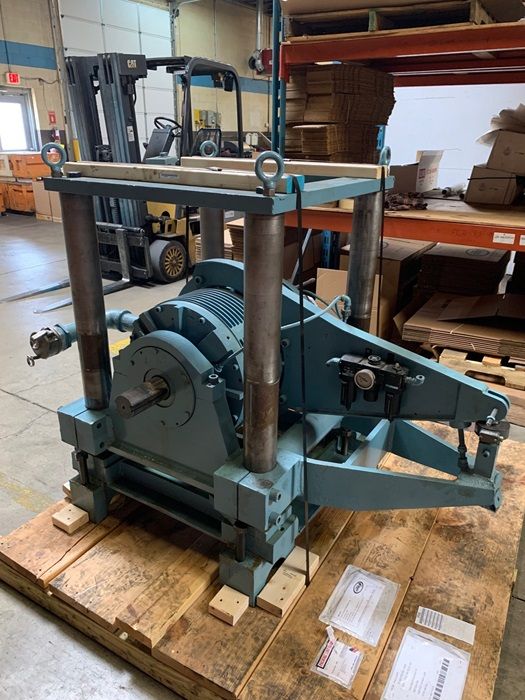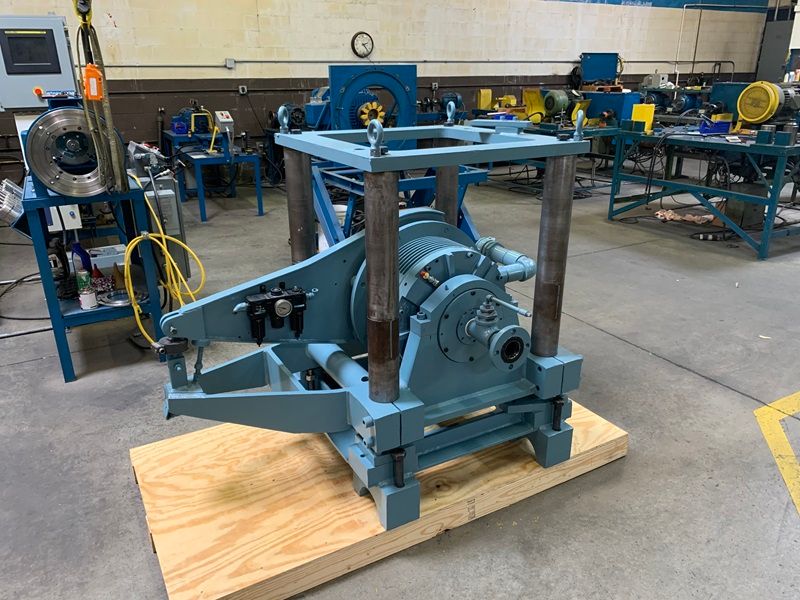Force Control Gives New Life to Aging Dynamometer
Walk into any manufacturing plant in the United States and you are likely to see 50-year-old men and women working hard. These skilled craftsmen and women have earned the respect of their peers by performing year after year. While 50-year-old workers are commonplace, 50-year-old equipment…not so much. When that equipment happens to be a dynamometer, and it gets shipped back to the manufacturer for review and rebuild, it will invariably get nicknamed “dyno-saur.”
This was the scenario that a service center engineer for a gearbox manufacturer found himself in. He inherited the dynamometer when his facility was shipped equipment for the manufacture and testing of gearboxes. His crew used the dynamometer sporadically on smaller projects, but when they tried to load test a cooling tower gearbox, they halted the test due to severe vibration in the dyno. After a complete rebuild, the old dyno (with its new nickname) was better than new, with capabilities that it did not have during its first half-century of work. Upon its return to service, the dyno easily handled the cooling tower gearbox load test, absorbing the full 250 hp at the beginning and ending of the 1-hour test, and absorbing 180 hp throughout the remainder.
A Brief Gearbox History
Originally built in 1966, the Force Control dynamometer was used until about 2000 at the company’s main gearbox manufacturing facility. The centralized location handled all aspects of gearbox manufacturing, casting, heat treating, metal cutting, and gear cutting. Pretty much everything that went into a gearbox was manufactured within this facility, and completed gearboxes were load tested with the Force Control dyno. Given the wide range of industries served and sizes of gearboxes manufactured, there is no telling how many load tests it performed in its first 30+ years, but it likely tested products destined for bridges, steel plants, assembly lines, military applications, and more. When the company decided to decentralize operations, the manufacturing and test equipment was shipped to their five regional service centers, including the northeastern US facility, when the service center engineer and his team “inherited” the dyno.
“It was pretty lightly used since 2000,” said a company representative. While load tests were the norm in the 60’s through the 90’s, they are not widely requested anymore. “Most of the industry does a no-load spin test. This was a 250 hp gearbox, so the customer wanted assurance that it could absorb 250 hp, which this dyno would be ideal for. We want to use it at the limits of its ability, but initially it wasn’t up to the task. We realized that it needed to be serviced, so we called Force Control.”
He sent the unit for inspection, and it didn’t take long for the Fairfield, OH team at Force Control to give the brake a new moniker - "dyno-saur." They installed new bearings, seals, drive plates, friction discs, and even added separator springs which will allow the unit to be mounted vertically rather than its normal horizontal orientation.
 After inspection, it was determined that the dynamometer needed to be serviced.
After inspection, it was determined that the dynamometer needed to be serviced.



